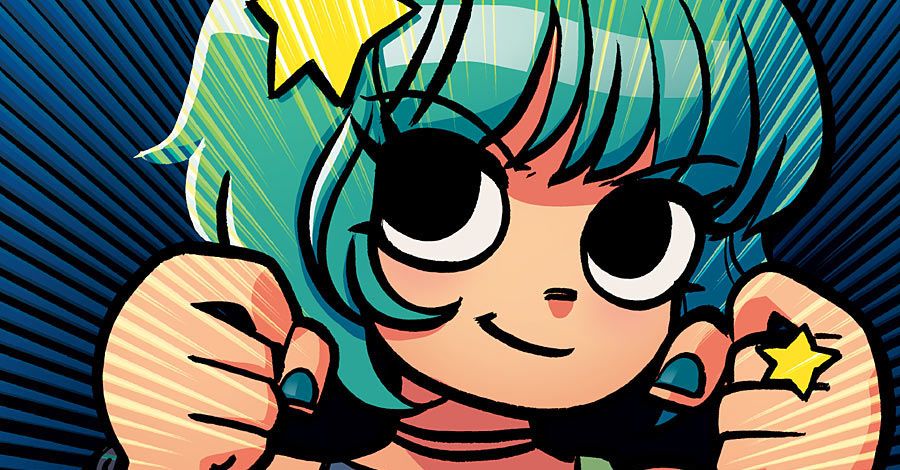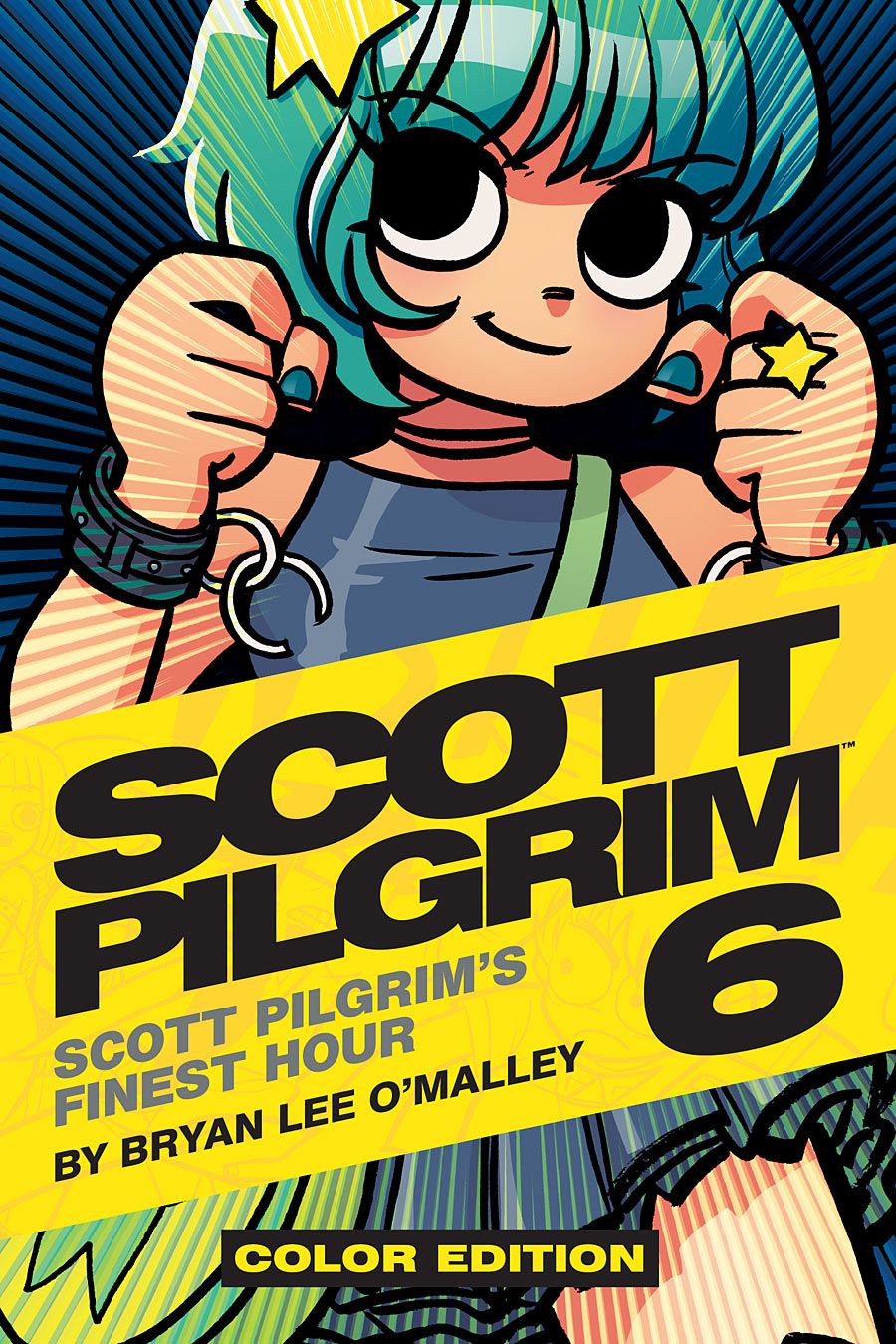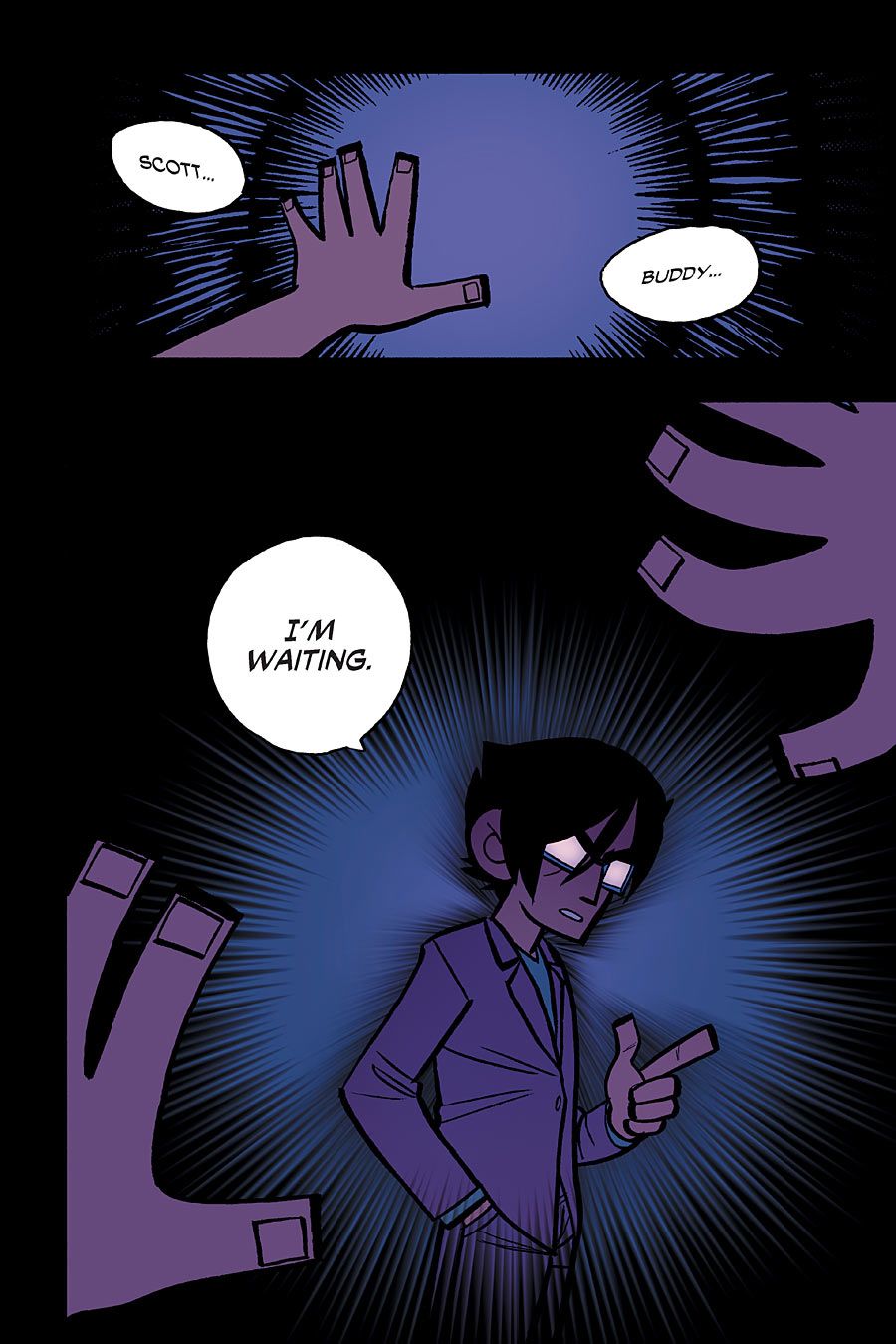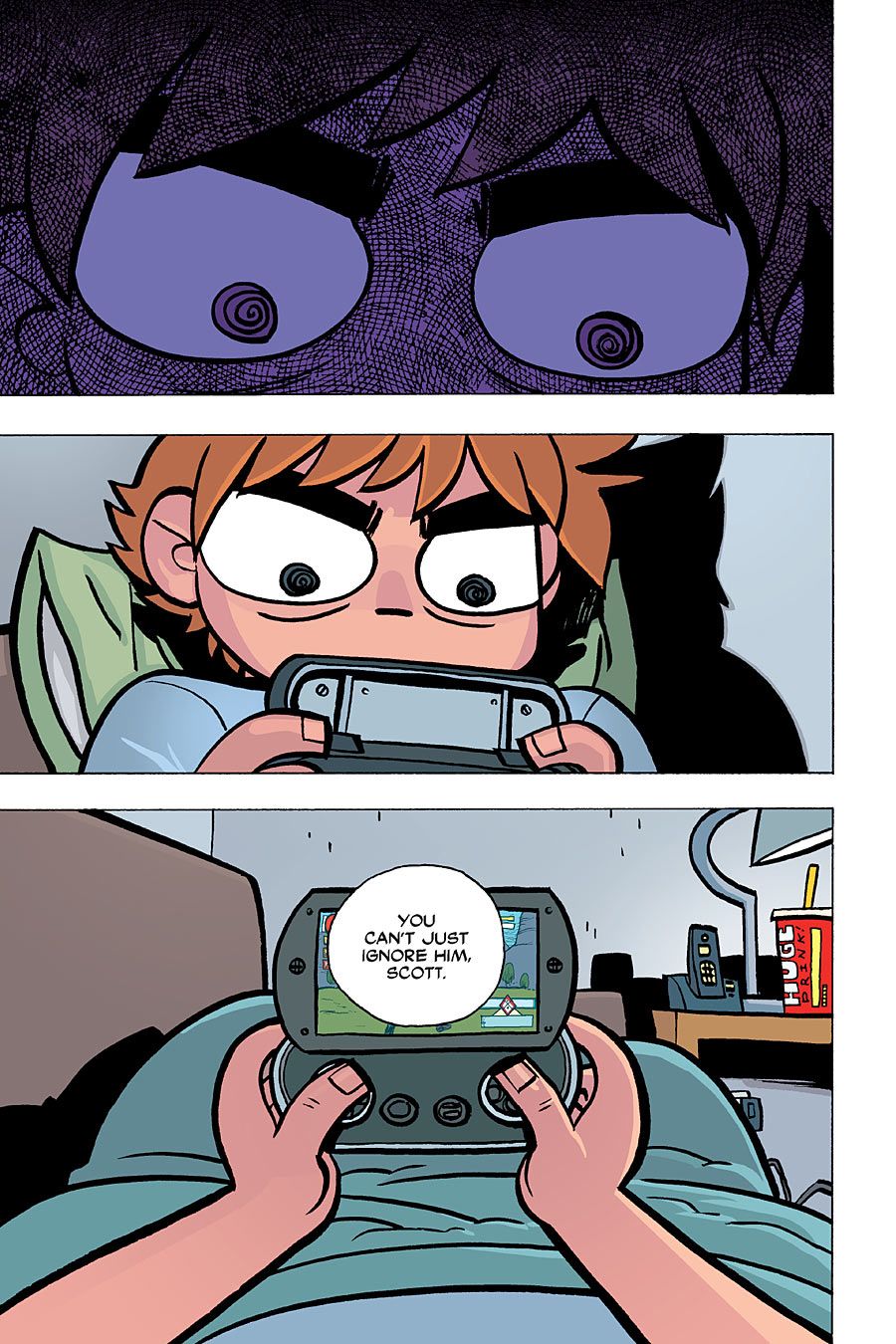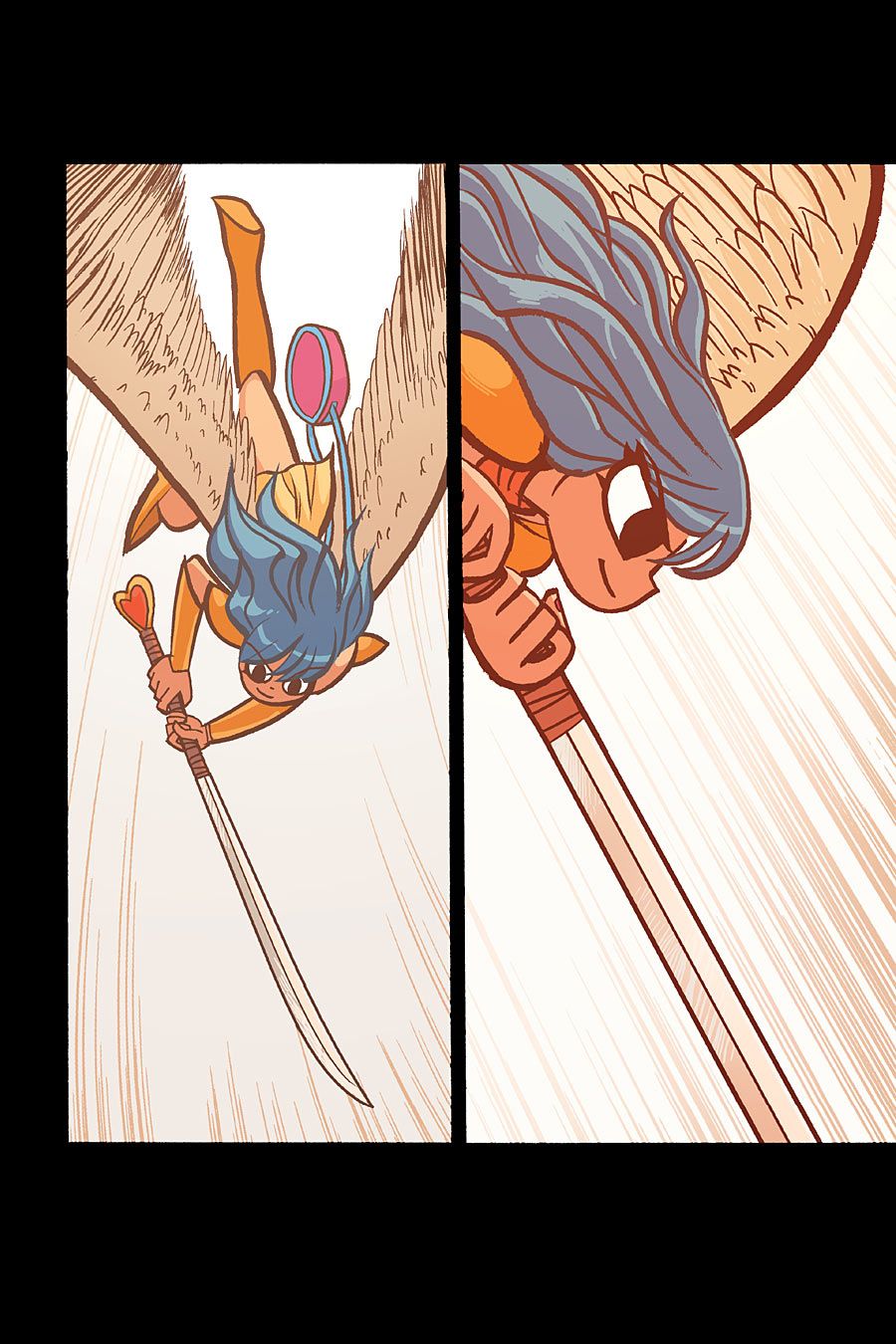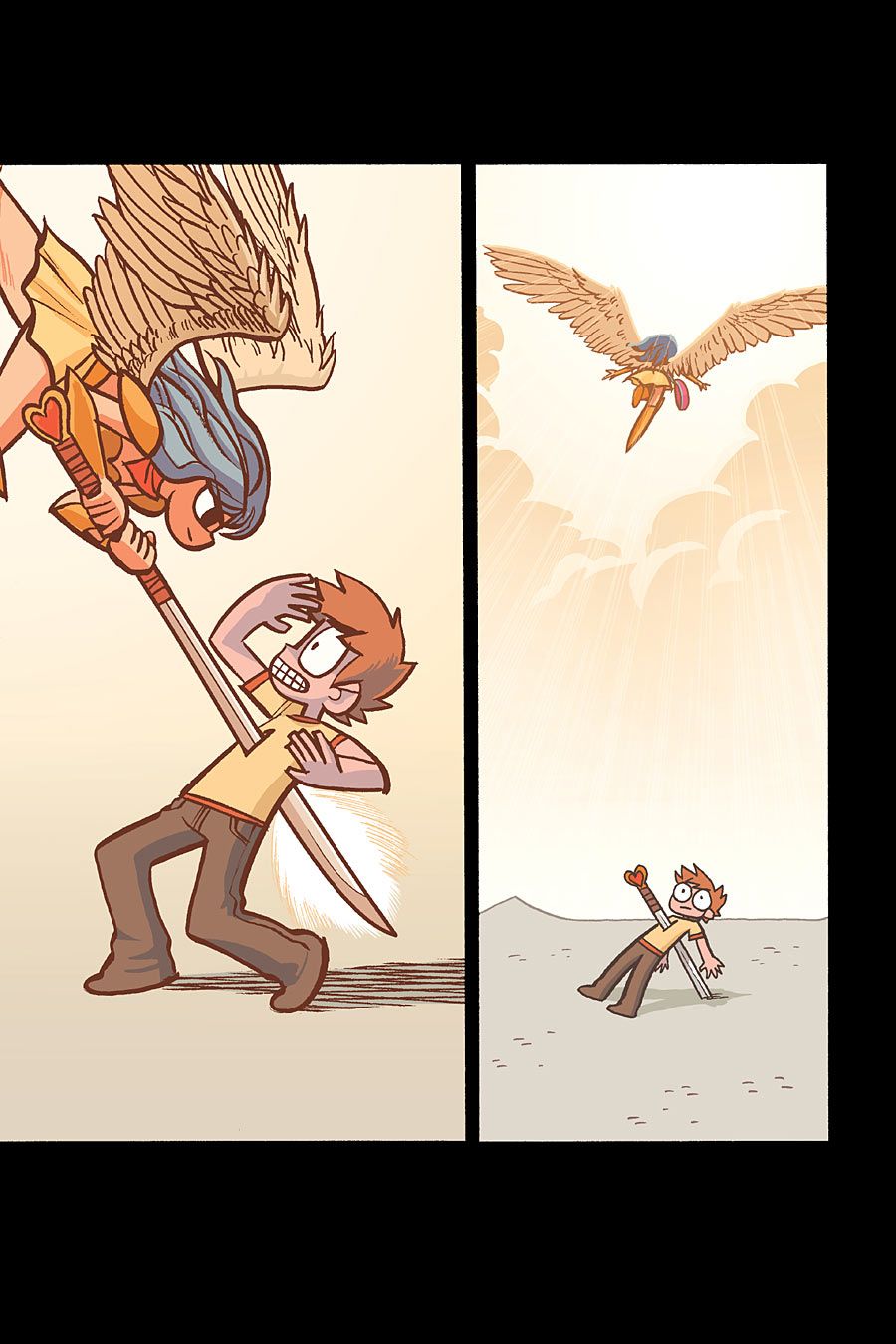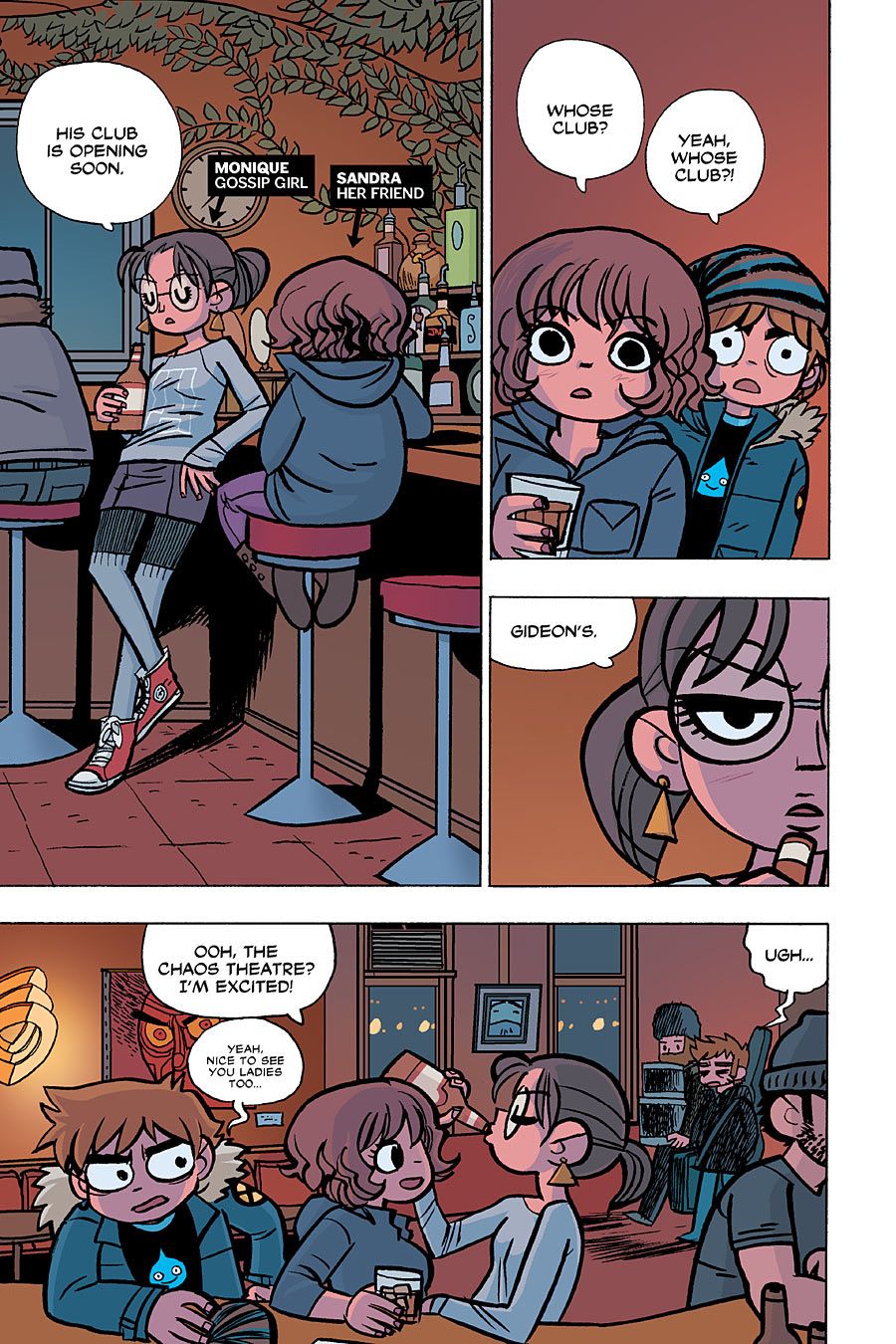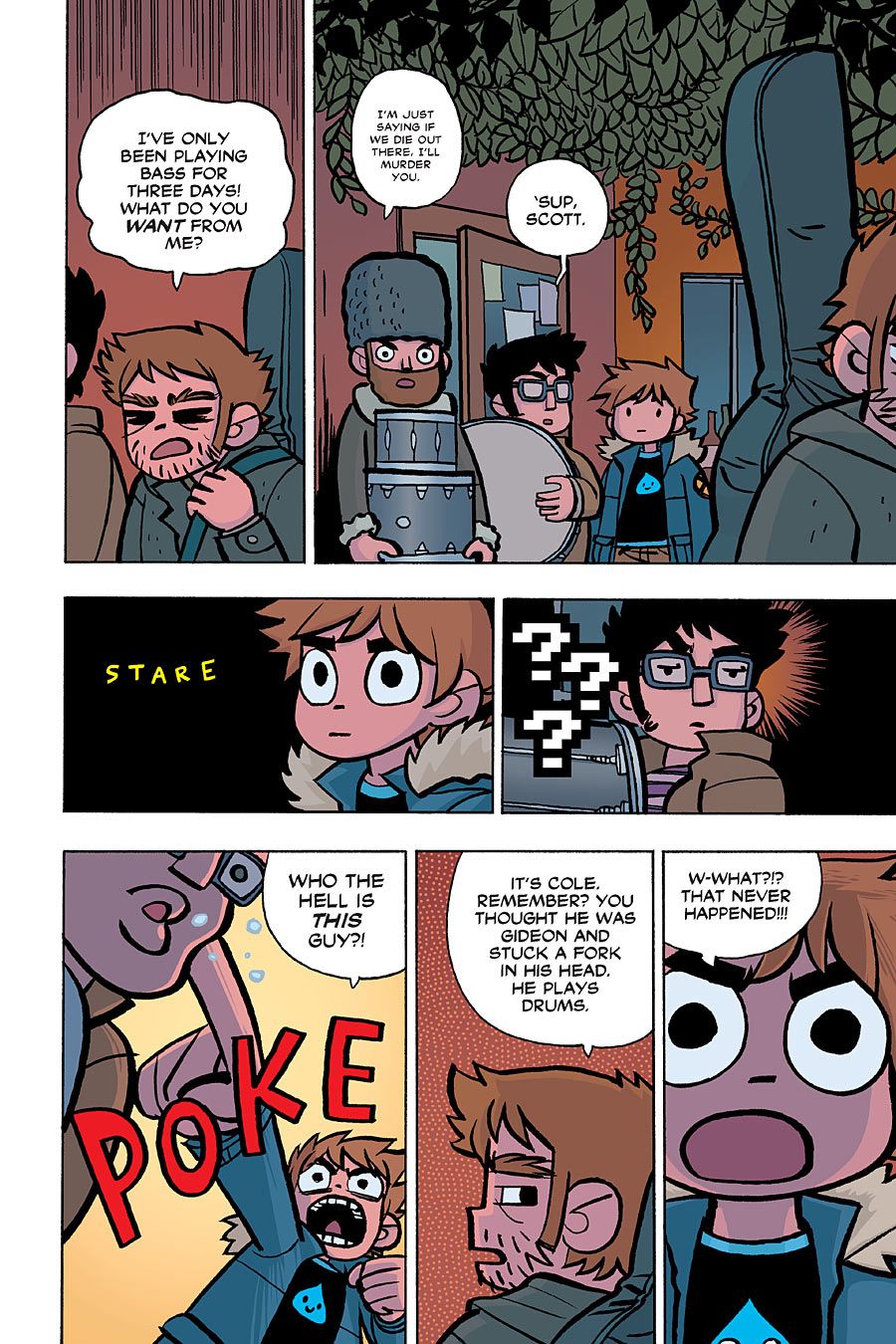Bryan Lee O'Malley is finally finished with Scott Pilgrim. Sort of.
Since wrapping his initial run of graphic novels in 2010 to coincide with the release of Edgar Wright's "Scott Pilgrim Vs. The World" film, the cartoonist has been working with colorist Nathan Fairbairn and publisher Oni Press to release hardcover color editions of the epic saga of a Toronto slacker. This week saw the release of the sixth and final hardcover -- "Scott Pilgrim's Finest Hour" -- marking the end of O'Malley's active work with the book since its first installment arrived in 2004. But even with two complete and definitive editions on the stands, it's hard for the artist to expect that fans of the series will stop requesting more action from the Pilgrim world in the future.
To put a cap on the long run, CBR News spoke with O'Malley about his relationship to the work today. The artist discussed the ways he and Fairbairn approached coloring the series as a whole, how he consciously worked to avoid "Star Wars Special Edition"-style traps with his own revisions, what the ending of the story means to him after the mad rush to beat the movie version to the public, and how everything Scott Pilgrim will affect him as he moves on to his next, still mysterious, series.
CBR News: Bryan, the final volume of "Scott Pilgrim" is about to be released in its hardcover color edition, marking the end of a long stretch where you've been actively working on the book in some form or another. Seeing this interview is synched to that, I guess you'll do this, and then no one will ever ask you about Scott Pilgrim ever again.
Bryan Lee O'Malley. Yeah, that's bound to happen. [Laughter]
Colorist Nathan Fairbairn has now worked on all of Scott Pilgrim, and your latest graphic novel "Seconds." Considering that, were you going through "Scott Pilgrim's Finest Hour" and giving him notes for specific scenes, or do you pretty much say, "Keep going," and leave it at that?
It's pretty much the latter. By now, we've done seven books together, including "Seconds". So we're pretty comfortable collaborating. We don't have to talk about everything. For the first three, I was very hands on. Every volume had its own specific color scheme or key color, which is based on the covers from the old version. So Volume 3 is pink, Volume 4 is green, 5 is purple and 6 is kind of this mixed bag, since it was a black cover. The one I was really the most hands off with was Volume 5. I looked back and thought, "What happens in this?" [Laughs]
Aside from the response the books got, the whole series was this massive thing just in terms of workload, I'm sure. With the last volume, it felt like you were racing against the clock to get the book out and in people's hands before the movie arrived. I'm sure you really wanted to disengage from the story for a while after that, but in the process of doing the coloring, how much have you gone back over the work as a whole? Have you had the urge to George Lucas a lot of things for these editions, or did you just say, "I'm done with this"?
A bit of both. It was nice to color them, because I feel like that unifies them more. Like you said, it was a long process. It was like seven years of my life, but now people can pick all six volumes up and read them in a weekend. I think that's great that people can just enjoy them for what they are. But especially in the first three books, I did go back and fix things. I redrew background details and rearranged a lot of facial features from the first volume which was before I had really figured out the style. Looking at the first edition, the faces look a little wonky to me. So I'd go through and just move a nose a millimeter over here and there, and it made me happy. That kind of work went through the first three and into the first half of the fourth one, but from there I was really hands off, and Nathan just did his thing -- which has been increasingly amazing. The sixth book looks so cool. Through all this, there were a couple of times where I'd look back at something and go, "I don't remember drawing 99% of this." So it was fun.
When I first read Volume 6, I bought it at San Diego and read it clean without having seen the movie. But for some reason in my head, I had imagined all of the final battle and Gideon's machine as being drenched in hot pink. Then the movie came out and reinforced that. Looking over Nathan's colors on that volume, it really struck me how things that seem so surreal and neon in the film are much more natural in the comic. The really crazy stuff only blows up at odd moments, like when they go into Ramona's head.
Yeah. Nathan is a real stickler for reality, and his lighting and color choices are really appropriate to the real world. I think that really started with the first book, which was more or less based on the pallet of the movie -- but only the first 20 minutes of the movie. It was set in this really earth-toned world where they're hanging out in their apartments with old furniture from the '70s or '80s. That's the grounding for this. In Volume 6, he used a lot more natural tones than I would have expected. But it works so well. Early on, I gave him notes or changes, and he was always game for that. But as time went on, I challenged him less and let him do his own thing because he increasingly challenged himself.
Since you did make some changes to the line art of the earlier volumes, will it affect the future of the black and white editions?
I don't know. I definitely think I'll leave the original black and white editions as they are, because that was the original work. The color editions are easy to look at as the "remastered" versions, because I didn't really change anything, per se, in those volumes. I know when the first ones came out, Erik Larsen, who does "Savage Dragon," was tweeting about all the little changes he found, but it's something that only another cartoonist would notice. It was just me changing head sizes subtly, and things like that.
As far as going forward, we've talked about doing an omnibus edition of the colored version, but we really have no idea yet. We're just getting through this run first, and then we'll see what's next.
Looking back on the whole project, I felt like Volume 5 got a lot of attention online before Volume 6 got really drawn up in all the movie stuff before finding its own end. Have you had a chance to get some perspective on the finish of the series as a whole, or are you still in that state of trying to remember how and what you did to get it done?
On the story itself, I reread them and saw them with new eyes when they were colored. It's interesting. I think at the time, 2 and 4 were my favorite books. Reading back, I still like those two, but now I think 5 might be my favorite. It's my favorite in terms of drawing. I think the drawing is really solid there, where in 6, I was a little more rushed. There are things I would do differently, but then it would be a different book. I still have trouble with endings. I like writing beginnings, but I find endings tricky. The sixth book is a little bit -- I don't know what word I'd use. I'm not going to slam my own work, but it was just hard to find a balance there between all the different threads and still make it fun. I think at the time when 6 came out, a lot of people were putting it down a little bit. But overall, when they read the whole series they get the scope of it more than people who were reading it immediately as it came out and whose expectations were high. For posterity, I think it's holds together well.
Endings are incredible hard to do, which is probably part of why we live in a world of endless sequels and relaunches. But it must also be hard to deal with fans whose core expectation is "Why would you stop this rather than just feeding me more of the thing I've already been enjoying?" That must be an extremely frustrating response when you're looking to move to a new project.
Yeah. For the first while after Volume 6 came out, some people would just ask me, "When is the next one coming out?" They were just not getting that it was supposed to be an ending. They thought it would just keep continuing. That quieted down after "Seconds," but it was weird. People just want the same thing. They don't want anything new at first, but once they figure out what it is and that they like it, they want it to go on forever. And you can't always give people exactly what they want. [Laughs] So I want people to enjoy "Scott Pilgrim," and if I ever did something with it again, it'll be different. It'll probably ruin it for someone. But if I did do that, it would be in the way I want to do it, and it'll be something that means something to me.
I suppose that the trick of doing a serialized story is that it's always going to feel like the work of the person you were when you did it. That's why the George Lucas special edition thing hold such an allure -- because you change as a person. But going back and changing your work with you? That way lies madness.
Right. I always think about when around 2003 or 2004 Frank Black did an album of covers of his own songs and Pixies songs. They were so wacked out and different -- and not in a good way. No one liked it. And I'm sure he had a good time doing it. So when I think about the idea of revisiting my own work, I always think about that, and George Lucas. Those are the two examples of why you should never do that. You might as well just go on and do something new, and people will just take it or leave it.
Do you think out in the future enough to consider what you'd do for a 20th anniversary edition of one of the books like we see these days?
I'm already thinking about it. It's not that far off now! [Laughter] I mean, it is, but it's under 10 years away. So you already start thinking, "I wonder what that's going to be."
Now that you've reached the point where you're no longer actively working on some kind of Scott Pilgrim project or going out to talk about some kind of Scott Pilgrim news, is it nice to be completely disengaged from your past work? Does that help you focus on what you want to do next?
Yeah. It's nice to be in a down cycle in terms of the public eye -- to not have to be on Twitter all the time. [Laughs] And I'm just figuring out the initial idea for the next thing, which is always the fun part. I think Scott Pilgrim will hopefully be to the side for a while. I don't know. Maybe not. I think I'll just leave it alone because people love it, and I want people to be happy. And future projects will take a whole different shape, but there's a point in between wanting to draw stuff that people are happy with and wanting to forge a new path and challenge myself. I feel like "Seconds" kind of set the stage for me to be able to do whatever the hell I want next, which is nice.
And in the meantime, you now have other older projects that you can look back on if you want. Oni just announced a return of Jen Van Meter's "Hopeless Savages." Have you talked to them at all about helping out with the new volume in some small way?
No, I actually haven't. Maybe they'll ask me! That was my first comic when I was 22 or 23. It was before "Lost At Sea" when I did pages for that book, and it was before I even thought of Scott Pilgrim. It was fun because some of those characters resemble Scott Pilgrim characters, and so it was sort of foundational for me.
The sixth and final color hardcover of Scott Pilgrim -- "Scott Pilgrim's Finest Hour" -- is available now from Oni Press.

